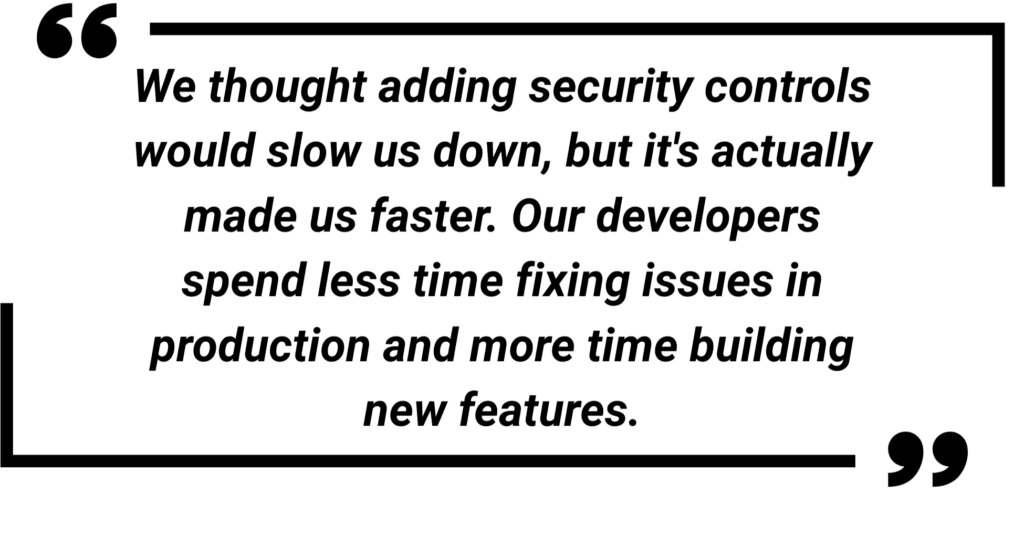Do you know with certainty what code you actually have running in production? Does the source location match the location identified in the object description? Are you really aware of what changes are being made to the code and whether that code is protected from potential security vulnerabilities? Implementing proper IBM i DevOps security practices is essential for protecting your systems from vulnerabilities.
Over the past 30 years, I have been involved in thousands of implementations of software change control tools in the IBM i world and the one consistent thing I can count on is that I will always find objects whose source is not in the place in which the object description says it is. I have even seen change management systems that compile programs to temporary libraries, copy the source and object to the actual production libraries and then patch the object description to reflect the current location of the source and objects. That means that there are production objects running in most IBM i shops for which no one really knows what they contain. Many IBM i shops can’t recompile large swaths of their applications because things might stop working – a symptom of not truly knowing where the correct source code is.
I have also found that most source code change processes rely on trustworthy developers (Fortunately, I have found that the vast majority of IBM i developers fit that description). However, unfortunately, I have also found exceptions to that rule. I once worked with a casino in Nevada whose IT director managed to embezzle five million dollars by burying his nefarious deeds in the programming code.
As one CIO recently told me, “We’ve spent years hardening our IBM i applications and implementing robust authentication, but we just realized our development pipeline has almost no security controls. Anyone who gains access to our source code could potentially inject malicious code that would bypass all our other security measures. And, as we are exposing more of our application to outside connections, we don’t have consistent processes to check our code for vulnerabilities to attacks.
In my conversations with IBM i development leaders over the past month, one theme continues to emerge: organizations have invested heavily in application security while neglecting the development processes that create those applications. This disconnect creates a significant vulnerability gap—one that modern DevOps practices are designed to address.
This realization represents a critical shift in how we think about IBM i security. It’s no longer sufficient to focus solely on the security of the finished application. True security requires addressing the entire development lifecycle.
The Hidden Vulnerabilities in traditional IBM i Development
Traditional IBM i development approaches often lack the security guardrails found in modern DevOps practices. This creates significant exposure to vulnerabilities, compliance issues, and technical debt that can compromise even the most secure applications.
Some of the most common security gaps I’ve observed in IBM i development environments include:
- Limited Code Reviews – IBM i shops are often so resource constrained that they can’t get a second set of eyes on changed code. This creates both potential quality issues and security vulnerabilities. It also means that there is usually just one developer who understands the changes.
- No Approval Processes – Many IBM i shops simply allow programmers to move their changes into production without any additional authorization. This can result in surprised end users who were unaware of the incoming changes but it also creates a vulnerability should a developer’s credentials get compromised.
- Lack of automated code scanning – Without tools to automatically identify security vulnerabilities, insecure coding practices often go undetected until they reach production.
- Programmers with *ALLOBJ authority or Unlimited Access to Production – Many IBM i shops grant programmers more authority than they should have. This dramatically increases the danger if a developer’s credentials get compromised.
- Insufficient dependency management – Before a change is made, it is important to review the list of objects that might be impacted by the change. This avoids production surprises. In addition, many IBM i applications incorporate open source components, yet few organizations track these dependencies for security vulnerabilities.
- Undocumented deployment procedures – Manual, undocumented deployment processes create opportunities for malicious or accidental security compromises.
Transforming IBM i Development with Modern DevOps
The good news is that implementing secure development practices doesn’t have to slow down your development process. In fact, modern DevOps approaches can enhance both security and velocity simultaneously.
Enforced Code Reviews: The Foundation of IBM i DevOps Security
While many IBM i shops have informal code review processes, modern DevOps takes this further by making code reviews mandatory and providing tools that make reviews more effective.
By implementing pull request workflows in systems like GitHub or Azure DevOps, organizations can ensure that all code changes are reviewed before they’re merged into the main codebase. The pull request process will prevent a promotion from occurring unless the appropriate approvals and reviews have been done. These systems also provide auditable records of who reviewed the code and what changes were requested.
Automated Code Scanning for Enhanced IBM i Security
Tools like SonarQube can now scan RPG, COBOL, and other IBM i languages for security vulnerabilities, providing immediate feedback to developers. One manufacturing client recently integrated SonarQube into their development process and was astonished to discover dozens of previously unknown SQL injection vulnerabilities in their code base.
The key advantage of automated scanning is that it provides continuous feedback without slowing down development. Vulnerabilities are identified early in the development process when they’re easiest and least expensive to fix.
Dependency Management
Open source components have become increasingly common in IBM i development, yet many organizations lack visibility into the security implications of these dependencies.
Modern DevOps practices include automated tracking of all third-party components and immediate alerts when vulnerabilities are discovered in these dependencies. This approach enables teams to quickly identify and update vulnerable components before they can be exploited.
Minimum Required Access Authorization
IBM i users should be granted the minimum access they need to perform their duties. The move-to-production process should be tightly controlled and done by a strictly limited number of authorized users. Ideally, the process should be initiated automatically by your DevOps system only after all required approvals have been gathered. Only the DevOps system should have the ability to update production. (For even better security, that same process should be in place for intermediate test environments).
Secure Deployment Workflows
Traditional IBM i deployment processes often rely on manual steps and excessive privileges, creating opportunities for security breaches.
Modern DevOps practices implement automated deployment pipelines with strict access controls. These pipelines ensure that only approved, tested code can be deployed to production, and they maintain detailed logs of all deployment activities for audit purposes.
Version Control Security
The source code repository itself is a critical security control point in any development process. Modern version control systems provide powerful security features that many IBM i shops aren’t fully utilizing.
These features include signed commits (which verify that code changes came from trusted developers), branch protection rules (which prevent unauthorized changes to important branches), and detailed audit logging of all repository activities.
Real-World Implementation
These concepts may sound abstract, but they’re being successfully implemented at IBM i shops today. A financial services client recently transformed their IBM i development process by:
- Migrating their source code from traditional IBM i libraries to Git
- Implementing mandatory code reviews through pull requests
- Setting up automated scanning of all code changes
- Creating secure deployment pipelines with appropriate access controls
- Implementing branch protection rules to prevent unauthorized changes

The result was a dramatic improvement in both security and development velocity. Security vulnerabilities decreased by over 70%, while the time to deploy new features actually decreased due to fewer production issues and rework.
As their development director told me, “We thought adding security controls would slow us down, but it’s actually made us faster. Our developers spend less time fixing issues in production and more time building new features.“
Getting Started with Modern DevOps for IBM i
Implementing Modern DevOps practices in your IBM i environment doesn’t have to be an all-or-nothing proposition. Many organizations succeed by starting with one or two key practices and gradually expanding their approach.
Here are some practical steps to begin your journey:
- Start with version control – If you’re not already using a modern version control system like Git for your IBM i code, this is the foundation for all other Modern DevOps practices.
- Implement basic code reviews – Even before automating the process, establishing a culture of code review can significantly improve security.
- Begin automating your deployment process – Reducing manual steps in your deployment process not only improves security but also reduces the risk of errors.
- Explore code scanning tools – Tools like SonarQube can now scan IBM i languages and provide immediate feedback on security issues.
- Develop a dependency management strategy – Start tracking the open source components used in your applications and monitoring them for security vulnerabilities
Join Us for a Deeper Dive
If you’re interested in learning more about implementing DevOps practices in your IBM i environment, I’d like to invite you to watch the replay of our webinar, “Secure by Design: DevOps Security for IBM i.” In this demonstration-focused session, we show you exactly how these concepts work in practice.
You’ll see live demonstrations of code scanning tools, secure deployment workflows, and other Modern DevOps practices specifically adapted for IBM i environments. We also share real-world implementation strategies based on our work with clients across various industries.
This webinar provides you with a comprehensive DevOps security implementation plan for your IBM i environment, practical guidance for selecting and implementing security tools, and clear metrics to measure your security improvements.

Whether you’re facing compliance requirements, concerned about vulnerabilities in open source dependencies, or seeking to modernize your development practices, this webinar provides clear, actionable guidance for securing your IBM i development pipeline.

Dan has spent over thirty years leading companies that help customers implement new technologies in legacy environments. Previously, Dan led worldwide software development groups that built highly successful modernization and DevOps tools and was the CEO of Aldon, the leading provider of DevOps tools to the IBM i marketplace. To learn more about Eradani’s offerings, reach out to us today!

